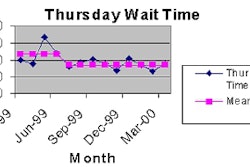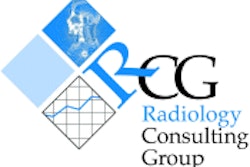Radiology administrators in the U.S. face a constant barrage of departmental stresses. There are annual budget tussles, Office of Inspector General audits, and Joint Commission on Accreditation of Health Organizations (JCAHO) surveys. As everywhere in healthcare, there is relentless pressure to do more with less.
But from an administrator's point of view, nothing causes more anxiety than union organizing activities, according to Robert Jacoby, administrative director of the department of radiology at Pomona Valley Hospital Medical Center (PVHMC) in California.
"I’d been working with my staff on a daily basis for years. And, of all of a sudden, none of them would speak to me without distrust in their voice," he said.
In a presentation at the 2001 American Healthcare Radiology Administrators annual conference in Las Vegas, Jacoby offered a chronology of the steps his administration took to address union organizing in his department.
First steps
Union activity first began at PVHMC after the institution announced a cost-reduction program, called Change 2000, that would slash $15 million from the operating budget of the facility, but without necessitating personnel layoffs. According to Jacoby, the California Nurses Association (CNA) saw the program as an opportunity to organize employees at the hospital.
"Flyers started appearing on bulletin boards in the various nursing units of the hospital questioning management’s ability to address staffing ratios, pay, and benefits in light of the Change 2000 program," said Jacoby.
The CNA seemed to focus on undermining the credibility of management and building on the emotions of employees, Jacoby said. These primarily took the form of accusing the administration of fostering patient neglect and outright negligence in maintaining the facility. Interestingly enough, this activity coincided with a scheduled JCAHO survey at the institution, he said.
"From a management standpoint, the timing of organizing activity couldn’t have been worse. Every department administrator was doing everything they could to ensure compliance and now they had to deal with staff mistrust of their motives," he said.
Stepping up the tempo
Once signed by an employee, union authorization cards are a legally binding document for one year. They give the union the right to negotiate the employee’s labor contract with their employer. The CNA’s efforts with the nursing staff, first begun in 1999, did not have the momentum to force a collective bargaining vote by employees within the one-year time frame. So the union organizers branched out to the engineering and housekeeping departments. The CNA asked the United Electrical Workers and Radio Operators (UE) union to assist in organizing non-nursing staff at the facility.
The administration of PVHMC reacted by retaining the services of The American Consulting Group, a Costa Mesa, CA-based union activity consulting firm. This group assisted the hospital executives in creating and implementing a campaign to defeat organizing efforts.
Pas de deux
Department heads at the facility began meeting weekly with Cliff Smith, the union activity consultant. Jacoby and his radiology management staff were given an acronym, called "TIPS" by Smith, which summed up the actions management should not take:
- T = Can’t threaten
- I = Can’t interrogate
- P = Can’t promise
- S = Can’t spy
As memos and flyers from both the CNA and UE began to show up on hospital bulletin boards accusing the facility of negligence, malpractice, and bad faith, the administration responded with its own flyers refuting the charges point by point.
The "no interrogation" proviso meant that Jacoby was enjoined from asking any staff member about union organizing, so he had to rely on reports from other department heads and the consultant that his employees were being contacted by UE organizers.
"As management, we cannot broach the subject of union organizing with our employees. However, once the employee initiates the subject, we can respond to their questions and concerns," Jacoby said.
In an effort to open the lines of communication with his staff, Jacoby announced a daily, hour-long "open" meeting where he would be available to address any employee concerns. For the first week, he said, he sat by himself in a break area. Employees would stop by and look at him, but no one engaged him in discussion.
Bust a move
Finally, during the second week of open meetings, a radiologic technologist approached Jacoby with a complaint about being contacted by a UE organizer at home. The RT’s concern was that a fellow employee had provided his unlisted home phone number to the union representative.
On the advice of the union consultant, Jacoby posted a memo informing the radiology associates that someone within the department had released home phone numbers without consent. This memo broke the communication logjam; more staff members began attending the open meeting.
"Because organizers are being pressured by their management to produce signed union authorization cards, oftentimes they will promise more than they can deliver to get associates' signatures," observed Jacoby.
"You need to handle every issue that has been brought up by union organizers with your staff with fact and detail. It’s vitally important that you respond logically, rationally, and without emotion to each and every statement, no matter how outrageous, put out by the union with specific facts. Credibility is the key issue," he said.
Organizing activity by both the CNA and UE dropped off at the facility following the successful completion of its JCAHO survey in June 2000, Jacoby said. However, he and fellow administrators at PVHMC have not become complacent. They don’t see an end to union organizing at the institution, but they do work toward taking preventative measures.
"Your best defense is good, open, and honest communication with your staff about issues and concerns affecting them and the hospital," he said.
By Jonathan S. BatchelorAuntMinnie.com staff writer
August 22, 2001
Related Reading
Easing the Tight Grip of Managed Care, December 1, 1999
Copyright © 2001 AuntMinnie.com



















